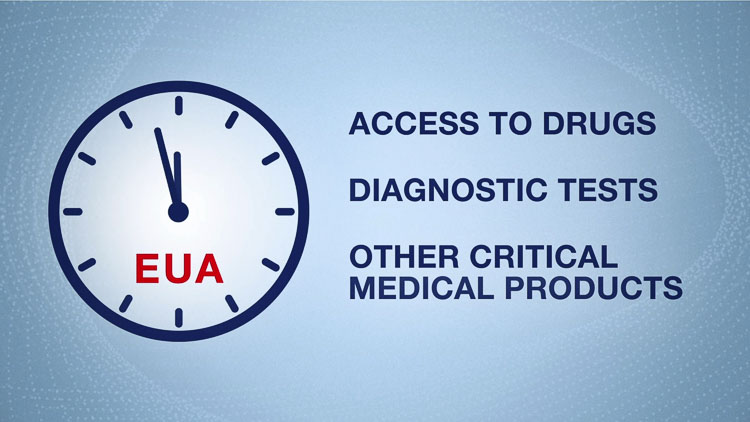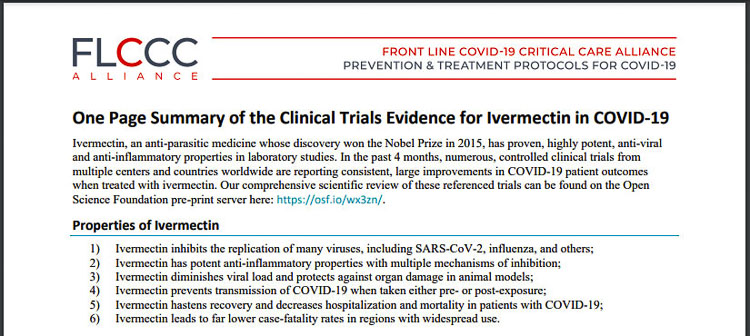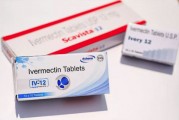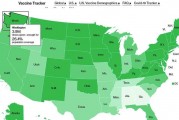Emergency Use Authorization approved for vaccines, but why not ivermectin?
On Thursday, the Food and Drug Administration (FDA) amended its Emergency Use Authorization (EUA) order for the COVID-19 vaccinations made by Pfizer-BioNTech and Moderna. These are the two mRNA vaccines that require two shots, given multiple weeks apart, for the initial vaccination.
They now “allow for the use of an additional dose in certain immunocompromised individuals, specifically, solid organ transplant recipients or those who are diagnosed with conditions that are considered to have an equivalent level of immunocompromise.” It is a small group of people according to the FDA.
The EUA does not apply to people who are not immunocompromised. Nor does it apply to people who took the single shot, Johnson & Johnson vaccination, which is a viral vector vaccine.

Yet it appears the FDA is not following its own rules for issuing approval of vaccines under the emergency use authority.
On Friday, radio talk show host Lars Larson took a call from a Clackamas, Oregon woman. She spoke about one of the conditions needed for the FDA to issue an EUA.
“This is (from) the FDA website,” she said. “You cannot get an emergency use authorization for a vaccine if there are any viable treatments. So they don’t want them; they meaning the government, big pharma, all of them. They don’t want there to be treatments because they can’t get that EUA. They’re keeping a lid on it. I’ve heard the same about hydroxychloroquine.”
“I’ve never heard that before, that an EUA can’t be granted if there are viable treatments for the thing you want the EUA to treat or to address,” Larson responded. “This part of the FDA code that you mentioned, but that’s stunning. If the FDA code says the only way you can grant an EUA is if there’s no viable treatments.”
Early in the pandemic, three vaccinations were developed in record time, allowing for the administration and use of the vaccinations under an EUA issued by the FDA. Clark County Today published a closer look at the details of the three vaccines in April.
Normally, it takes 10 to 15 years for a new vaccine to be approved. Vaccine development is a long, complex process, involving a combination of government agencies and private firms. Studies to determine the best dose, dose schedule effectiveness, safety and side effects require long term follow-up.
No adequate, approved alternatives
The FDA is allowed to exercise its EUA authority when “there are no adequate, approved, and available alternatives.” The FDA explains:
“Under section 564 of the Federal Food, Drug, and Cosmetic Act (FD&C Act), when the Secretary of HHS declares that an emergency use authorization is appropriate, FDA may authorize unapproved medical products or unapproved uses of approved medical products to be used in an emergency to diagnose, treat, or prevent serious or life-threatening diseases or conditions caused by CBRN threat agents when certain criteria are met, including there are no adequate, approved, and available alternatives. The HHS declaration to support such use must be based on one of four types of determinations of threats or potential threats by the Secretary of HHS, Homeland Security, or Defense.”
The current public health emergency was declared Jan. 31, 2020. On March 27, 2020 the FDA announced the EUA in the battle against COVID-19. Nothing in the FDA’s EUA announcement said anything about there being “no adequate, approved, and available alternatives.”
The announcement did say: “the FDA Commissioner may issue an EUA if the criteria for issuance of an authorization under section 564 of the FD&C Act are met.” Section 564 includes a determination that “there are no adequate, approved, and available alternatives.”
Last December, Dr. Pierre Kory received national notoriety when testifying before a Senate Homeland Security committee about the positive impacts ivermectin had in the battle against COVID-19.
In a June media interview with Joe Rogan, Bret Weinstein and Dr. Kory shared information about using the drug ivermectin. It has been administered four billion times around the world. It received the Nobel Prize in medicine in 2015. It is considered by many to be a safe, inexpensive anti-parasitic drug that has anti-viral and anti-inflammatory properties.
“What we’ve done is we’ve effectively suspended a lot of the rules of evidence for things like vaccines that were brought to market under emergency use authorizations, and then we’re setting a stupidly high standard for things that are very safe and appear to work,” said Weinstein, an evolutionary biologist and a visiting fellow at Princeton.
Ivermectin is a very inexpensive generic drug, perhaps as low as $1 per dose if purchased in large quantities, according to Kory.
Both Kory and Weinstein mentioned that Dr. Fauci created a $3.2 billion initiative to find new drugs to fight COVID-19. “These drugs that they find will all be under patent and therefore highly profitable,” Weinstein said.
“We are ignoring the evidence that is right in front of us that we have multiple drugs that are highly effective for COVID,” he said. “And one that I would point out again, is highly effective as a prophylactic” referring to ivermectin.
The Congressional Research Service reported the following in March.
“Most recently the Congressional Budget Office estimated that the Biomedical Research and Development Authority alone has spent $19.3 billion on COVID-19 vaccine development. In addition, Lisa Cornish projected $39.5 billion in US spending.
“In addition, over $50 billion in Public Health and Social Services Emergency Fund funding has been made available until September 2024 for a broad set of medical countermeasures and surge capacity purposes, including for the development, manufacture, and purchase of vaccines and related supplies.”
Weinstein summarized the financial conflict of interest this way.
“I know that the shareholder value must be driving things behind the scenes,” he said. “I know that these companies have been immunized from liability with respect to harms that might be done by the vaccines that they’re distributing. So there’s a question about, do all of those things add up to explain the many anomalies about the recommendations of how to treat patients who have COVID.”
Is ivermectin a “viable treatment”?
Kory spoke about two facets of ivermectin — it is effective in treating people infected with COVID, and it is effective as a prophylactic in the prevention of getting sick from the virus.
Kory is an ICU and lung specialist who has treated hundreds of COVID patients with ivermectin. He is part of a group known as the Front Line COVID-19 Critical Care Alliance. The group’s focus has been prevention and treatment protocols for COVID-19.
He shared that studies show a 62 percent reduction in death overall, for people who use ivermectin as a treatment. If used early on, the reduction is 80 percent.
Their “MATH+” protocol was adopted by two hospitals, which recently reported a 6.1 percent mortality rate. That compares very favorably with a 23 percent hospital mortality rate calculated from a review of 45 studies including over 230,000 patients.

According to Kory, weekly prophylactic use of ivermectin has shown an 86 percent effective rate in preventing people from getting COVID. He cited a study of 1,200 healthcare workers in South America, where 800 took ivermectin and 400 did not, over a four-month period.
None of the 800 healthcare workers who took ivermectin got COVID. “These frontline workers were so thoroughly exposed to COVID that 57 percent of the people in the 400 person control group who didn’t take ivermectin did get COVID,” Weinstein said.
Kory shared if you’re taking ivermectin as prophylaxis, you should take it with a meal.
“It isn’t just ivermectin,” Weinstein said. “We now have a series of repurposed drugs for which there’s not a large profit to be made, because they’re out of patent.
“They have shown high effectiveness in the treatment of COVID,” he said. “Our failure to use these things properly in a coordinated way that is actually evidence based, is putting humanity in danger of getting stuck with this pandemic, forever.”
In June, Dr. Kory and Dr. Paul Marik (FLCCC Alliance) shared the following.
“More recently, profound anti-viral and anti-inflammatory properties of ivermectin have been identified. In COVID-19 specifically, studies show that one of its several anti-viral properties is that it strongly binds to the spike protein, keeping the virus from entering the cell. These effects, along with its multiple abilities to control inflammation, both explain the markedly positive trial results already reported, and poise ivermectin to again achieve similar historic impacts via the eradication of COVID-19.”
Given the inexpensive price and the safe use of ivermectin for over 40 years, citizens might wonder why the FDA wouldn’t give permission for healthcare providers to use it treating COVID with an EUA of its own. Why are they not following their own rules?
“There’s no money to be made in ivermectin,” said Rogan.
Also read:
Is Ivermectin a safe way to fight COVID-19 as Delta-variant cases rise?

A closer look at the three COVID-19 vaccines available to citizens

Opinion: We should be questioning the global suppression of early treatment options for COVID-19





